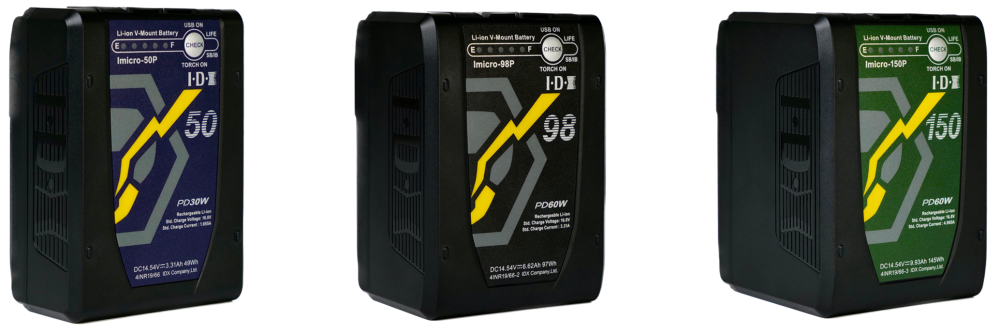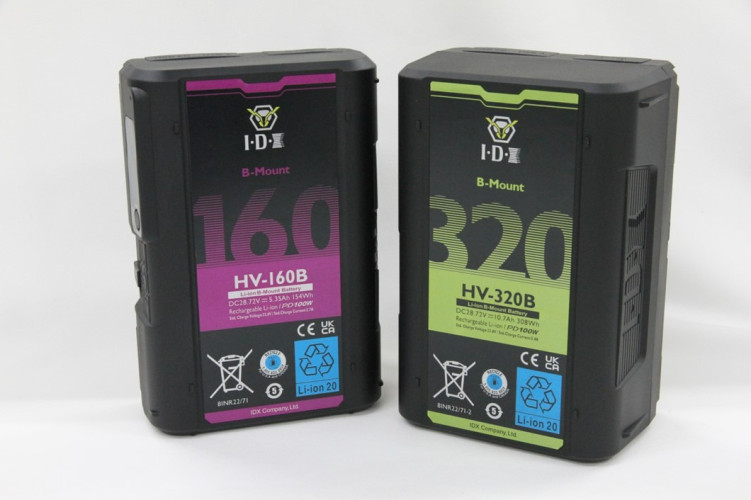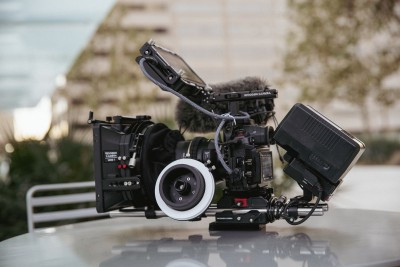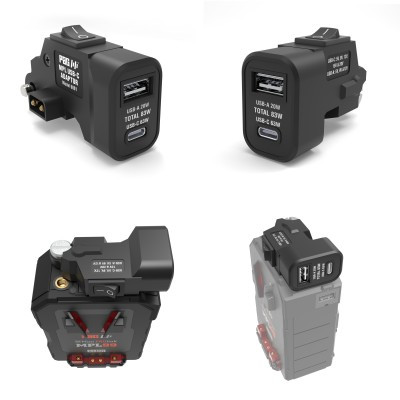Intelligent linking - answering some key power questions
Author: KitPlus
Published 1st July 2013
with Steve Emmett
What makes a safe Li-Ion Battery?
Recently, the Boeing Dreamliner story has added to the perception of the Li-Ion battery as a potentially dangerous item. However, the reality is that Li-Ion batteries are a safe and robust source of portable power, when they are designed and constructed by a recognised battery manufacturer that has specialist battery safety knowledge, and one that is committed to producing high-quality products.
The Li-Ion battery construction must be tested by an independent facility in compliance with UN safety regulations, as required by air transport authorities, such as IATA. The battery manufacturer should be able to provide the test reports for your scrutiny. It is a mandatory requirement for Li-Ion batteries to be sealed, in order to preserve the original build standard of the UN certified device, and for this reason Li-Ion batteries should never be opened, let alone recalled.
The battery manufacturer is also required, by IATA, to demonstrate that it has a quality management programme in place. The coveted ISO 9001:2008 standard meets these requirements.
The mechanical design of the battery must provide protection in the event of accident or abuse, cradling the cells against damaging shock and vibration. However, batteries are likely to be damaged by severe abuse, such as being repeatedly thrown onto the ground. The battery case should be manufactured from high-impact, injection-moulded polycarbonate which is inherently strong (it is used for motorcycle crash helmets), and resistant to battery electrolyte.
It is important that the battery pack incorporates high-quality Li-Ion cells from a leading manufacturer. Low-quality cells are susceptible to failure. The Li-Ion cells should be matched to close tolerances so that the battery pack is perfectly balanced. The low-resistance inter-cell nickel strapping and cell layout should be constructed to optimize current sharing, to reduce one of the common causes of cell-imbalance and a shorter battery life.
The battery assembly must feature protection systems that control its operating parameters, guarding against: over-current, over-charge, over-discharge, over-temperature, under-temperature and inappropriate charge sources. Multiple levels of protection should be included so that safety is not totally dependent upon the continual operation of a single circuit.
To effectively guarantee against shorts that could be caused by electrolyte leakage, the circuit boards should be protected with a vapour deposited conformal coating, such as Parylene; this safety feature is unique to PAG batteries.
Why doesn’t PAG make a high-capacity battery?
High-capacity Li-Ion batteries have air transport restrictions, but by linking batteries and combining their capacities, these can be avoided. PAGlink intelligent linking batteries have individual capacities of 96 watt-hours, which can then be linked to create 192Wh, 288Wh or even 384Wh batteries, providing the high-capacity and longer run-time required. This modular approach is flight-friendly; PAGlink batteries can be taken on-board passenger aircraft, in hand-luggage, without quantity restriction.
Li-Ion batteries that have capacities greater than 100 watt-hours are subject to regulations imposed by air transport authorities that limit the number of spare batteries you can take on-board civil aircraft to two, any additional batteries must be ‘installed in equipment’. Batteries that have capacities in excess of 160Wh cannot be carried on at all, but can be checked-in if installed.
The PAGlink system allows up to eight batteries, in any state of charge, to be linked for charge or discharge. Combining two batteries also increases the current draw capability from 8A to 12A, which leads us onto another commonly asked question.
I only need one battery for a days shooting; what are the benefits of linking two?
There are many advantages to be had from linking batteries for discharge. Even if a single 96Wh battery will provide enough run-time for a days shooting, it is standard practice to take a spare battery. It is more useful to have a spare battery that can be linked, combining capacities to extend camera run-time, without interrupting the provision of power.
Using two linked batteries to share the current draw not only gives you a longer run-time than if you were using two individual batteries consecutively; it also extends the overall life of the batteries.
Linking two or more PAGlink batteries increases the current draw capability from 8A to 12A, which is ideal for simultaneously powering a camera and multiple accessories. 12A of current is greater than anything offered by other manufacturers’ comparable battery systems. Uniquely, PAGlink batteries incorporate high-current pin contacts.
The extra power that linking batteries offer can be distributed using the PAGlink PowerHub, a low-profile discharge plate designed to provide the outputs you need. The PowerHub can be positioned between two batteries to maintain the hot-swap capability. It features four 12V outputs via connectors of your choice (D-Tap, Hirose, 2.1mm) which can be configured to your individual requirement. You can even charge your smartphone while you are shooting using the PowerHub’s USB module (1A, 5V).
Which battery discharges first when batteries are linked?
Linked PAGlink batteries form a high-speed network, allowing them to communicate with each other, and manage output. The system elects the battery nearest to the camera (or load) to be the ‘master’ and ensures that this battery is always active (but not necessarily delivering current). The system makes the most efficient use of the energy available, and prevents a transfer of charge between batteries.
As discharge progresses, the system automatically determines which batteries are most suitable to bring on-line for discharge, according to their charge status; it electronically adds or subtracts batteries from the output line to deliver the current required.
Unlike other systems, PAGlink batteries can be in any state of charge when you link them for charge or discharge. As long as the ‘master’ remains connected, batteries may be added to or removed from the stack (hot-swapped) in order to achieve continuous running. The system also ensures that the maximum linked output is managed to a safe level.
Why do I need an intelligent digital battery?
Modern cameras are becoming increasingly computerised, and benefit from communication with the batteries used to power them. PAGlink is the first digital battery system designed to communicate automatically with multiple camera data systems.
PAG works closely with the camera manufacturers to ensure that the information required by the camera is provided by the PAGlink batteries. Some less advanced ‘digital’ battery systems are designed to communicate with one specific camera data system; many batteries do not communicate at all.
PAGlink’s multi-system communication enables the batteries to report capacity for display in camera viewfinders, and adjusts automatically when it encounters a new data system.
A lack of battery communication can result in unexpected loss of power, which could corrupt your files. Retrieving the images is time consuming, with no guarantee that they will be usable, a scenario that is too costly to risk. For this reason it is wise to consider using the latest battery technology when powering the latest camera technology.
PAGlink is sophisticated but not complicated. It is designed to make your life easier. Communication takes place without user intervention. PAGlink gives you reassurance that you will not unexpectedly lose power, and allows you to concentrate on getting the images you want.
Intelligent PAGlink batteries and chargers are capable of receiving firmware upgrades in the field, enabling you to take advantage of the technological advances PAG introduces to accommodate developments in camera technology. These can be carried out by the user in a matter of seconds, without opening the product cases.
What are the benefits of linked battery charging?
Linked charging is fully automatic and makes life easier. After a shoot, simply stack all your discharged batteries on the charger, and by the morning they will all be fully-charged and ready to use. When on location, it is no longer necessary to set your alarm for the middle of the night to put more batteries on charge.
Linked charging is unique to the PAGlink system. Up to sixteen PAGlink batteries, in any discharged state, can be charged using a two-position PAGlink charger (8 linked batteries on each position). This means that it is possible to manage a large battery inventory with fewer chargers; a more efficient and economic solution than purchasing one charger for every two or four batteries.
PAGlink intelligent batteries communicate with each other to manage the charging process. The most discharged batteries are given priority. The battery’s state of charge is displayed on its individual capacity indicator, so that you know at a glance which batteries are fully-charged and ready to use. Fully-charged batteries stop accepting charge automatically and independently of others in the stack.
Using a PAGlink PL16 charger,eight fully-discharged batteries will be fully-charged in approximately 11 hours. If you need power in a hurry, one battery will be 90% charged in 2 hours.
When you want to charge PAGlink batteries on location and travel as light as possible, PAG recommends the PAGlink Micro Charger. This unique, ultra-compact charger is the first single-position, multi-battery charger that will fit in your coat pocket. Up to 4 linked PAGlink batteries can be charged using the Micro Charger. It is also suitable for charging individual standard V-Mount Li-Ion batteries manufactured by PAG and Sony. 1 fully-discharged 96 watt-hour battery will be 80% charged in approximately 3 hours. 2 batteries will be charged in 7 hours. The charging unit clips over the battery contacts, and is connected to a plug-in power supply that features interchangeable plug adaptors for use worldwide.

































